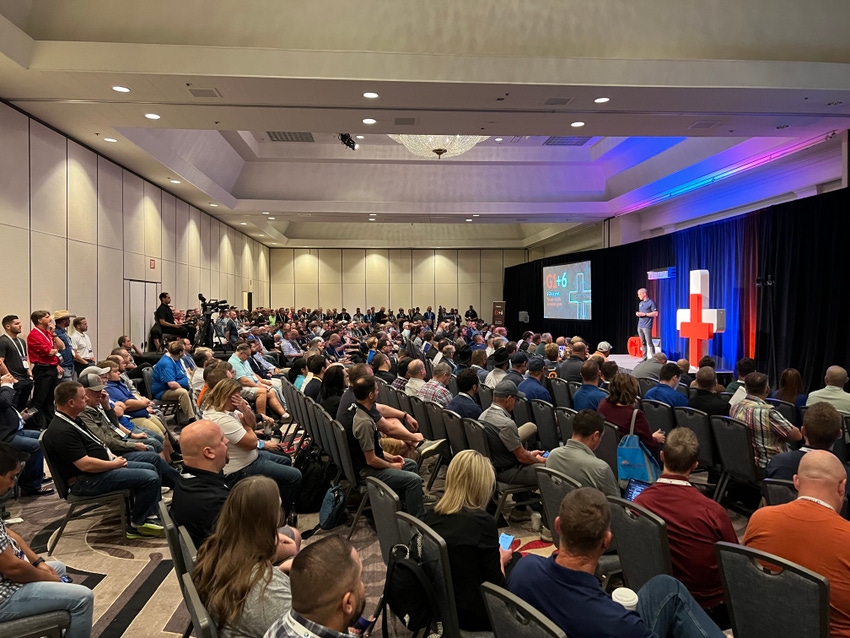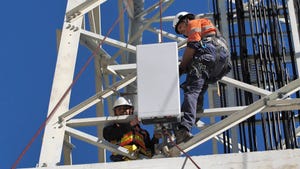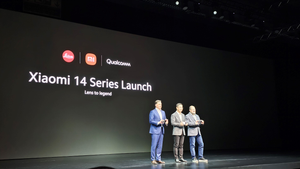Tarana touts its G1 tech for unlicensed 6GHz spectrum
Tarana announced that its G1 technology can now operate in unlicensed 6GHz spectrum. The company is positioning its next-generation fixed wireless tech as a less expensive, faster-to-deploy alternative to fiber-to-the-premises that is superior to satellite.

Tarana CEO Basil Alwan appeared this week at "Wispapalooza," the annual fixed wireless industry show hosted by the Wireless Internet Service Providers Association (WISPA), to announce that its next-generation fixed wireless access technology, G1, can operate in unlicensed 6GHz spectrum.
Dubbing the offering G1+6, Tarana said in a press release that its G1 technology – deployed in over 200 networks in 20+ countries – will be able to deliver "gigabit-tier services" with the availability of "ample 6 GHz spectrum."
Tarana shared the news as the US prepares to make up to 1,200 megahertz of unlicensed 6GHz spectrum available, following a vote in 2020 to approve the entire band for unlicensed use. To the dismay of some 5G proponents, the 6GHz band is thus expected to be used for Wi-Fi and FWA deployment. The FCC announced the start of testing for Automated Frequency Coordination (AFC) systems in the 6GHz band in August.
The FCC also has 6GHz on its October open meeting agenda, with plans to consider a new order to expand unlicensed use of the 6GHz band to allow for the operation of very low-power devices in the 5.925-6.425GHz and 6.525-6.875GHz sub-bands, as well as proposed rules on expanding very low-power devices to the rest of the band.
Tarana isn't the only FWA vendor preparing for 6GHz opportunities. Cambium Networks this week also announced its ePMP 4600 is "ready for broadband service providers to extend networks with 6 GHz as soon as the FCC opens the frequency band," according to a press release. Cambium is working with Qualcomm on testing for AFC systems and said its solutions "are fully compliant with frequency coordination processes and are currently in the 45-day trial period."
In an email to Light Reading, a Tarana spokesperson confirmed the company has successfully completed the Wi-Fi Alliance Test Suite, as well as end-to-end testing with CommScope's AFC implementation.
Tarana also cited several attributes it says sets the G1 technology for 6GHz apart, including offering high performance for non-line-of-sight (NLoS) links, and that it cancels unlicensed interference. As Tarana CEO Alwan said during his presentation, that will matter as 6GHz gets crowded over time.
"6GHz is pretty clean spectrum right now. But it's not going to be clean spectrum forever, right? It's going to get more and more usage, not just Wi-Fi devices but multiple service providers. So you have to be ready for that," he said.
Growing FWA competition
Notably, Tarana's G1+6 announcement follows recent news from the company that it raised an additional $50 million to support its growth as it seeks to scale sales and operations to rapidly deploy G1. "We are full-on in growth mode at this moment," Alwan told Light Reading in September.
With its ramp-up of G1 deployments, and its G1+6 announcement, the company is working to position its fixed wireless tech as a less expensive, faster-to-deploy alternative to fiber-to-the-premises (FTTP) that is superior to satellite.
Indeed, Tarana has been critical of the $42.5 billion Broadband Equity Access and Deployment (BEAD) program for its focus on FTTP, putting out research earlier this year stating that it would cost upwards of $200 billion to close the US digital divide with fiber alone.
In the press release about G1 in 6GHz, Tarana stressed FWA as a way of connecting locations too expensive for fiber and areas that lack broadband competition.
"There have been a number of state-funded projects in the past few years with fiber-build costs in excess of a state-taxpayer-infuriating $100,000 per home. As an alternative, new lower-orbit satellite constellations are markedly better than prior satellite generations, but their limited network capacity makes them best suited to serve only hard-to-reach remote locations," said Tarana.
"The remaining all-important challenge lies in areas too difficult for fiber and too dense for satellite service – by Tarana's estimate more than 40 million households nationwide," the company added.
Following Alwan's presentation at Wispapalooza, Tarana told Light Reading that customer interest in G1+6 is "off the charts," with product sales "ramping up," and one distributor "selling out and reordering less than a day after launch."
About the Author(s)
You May Also Like












